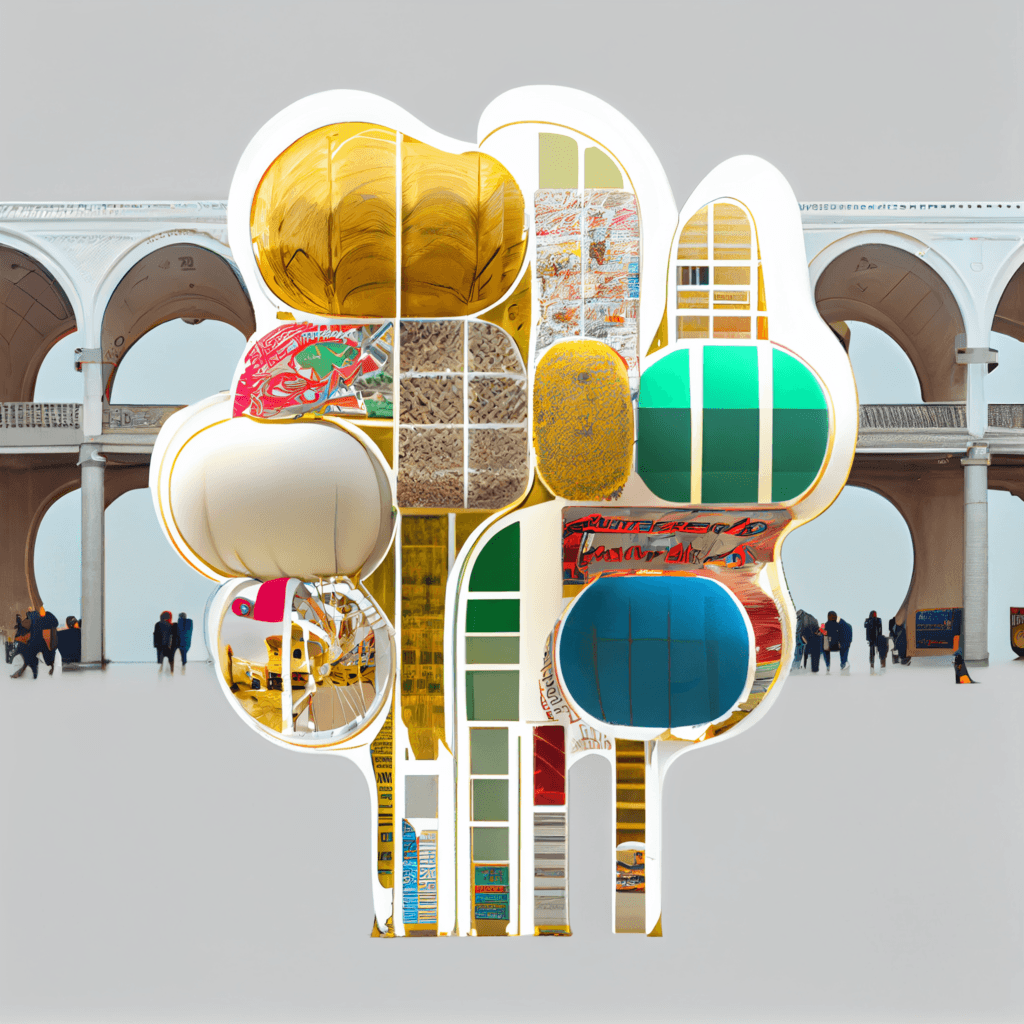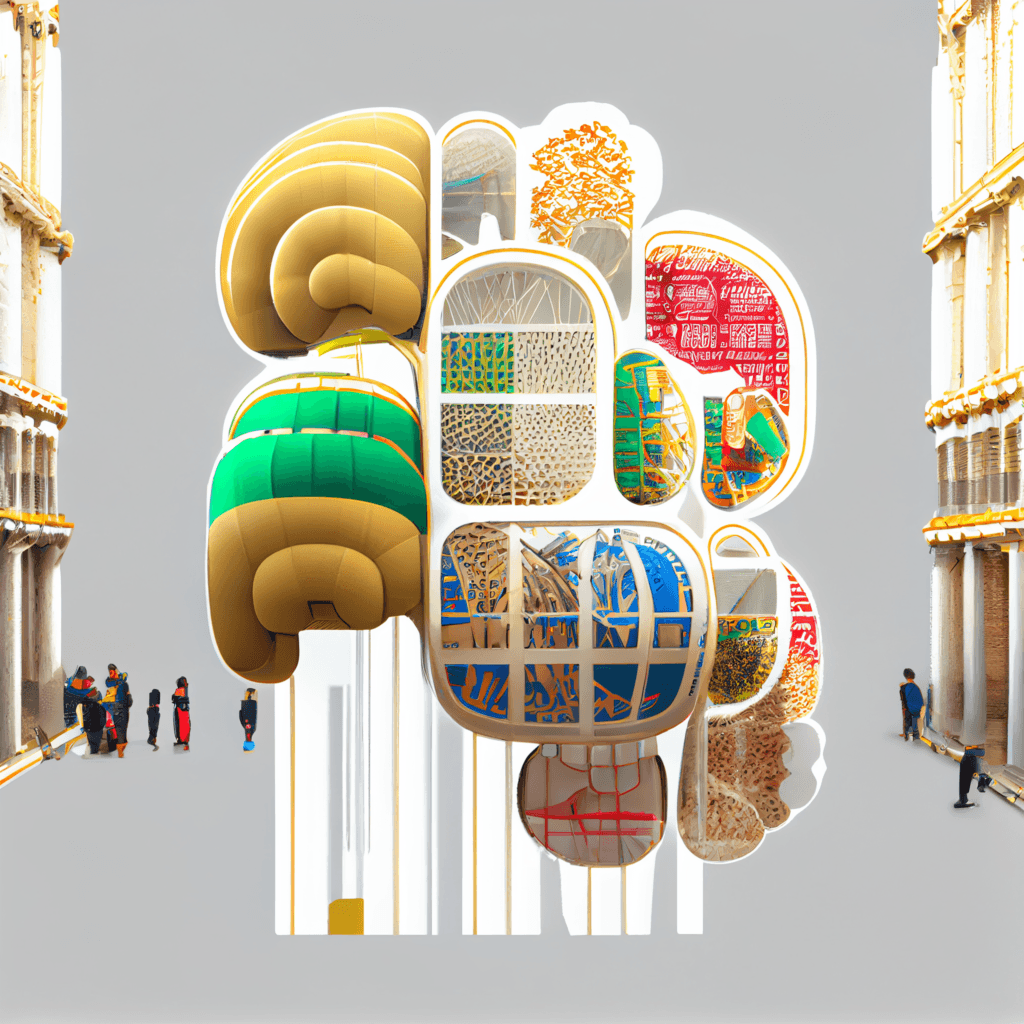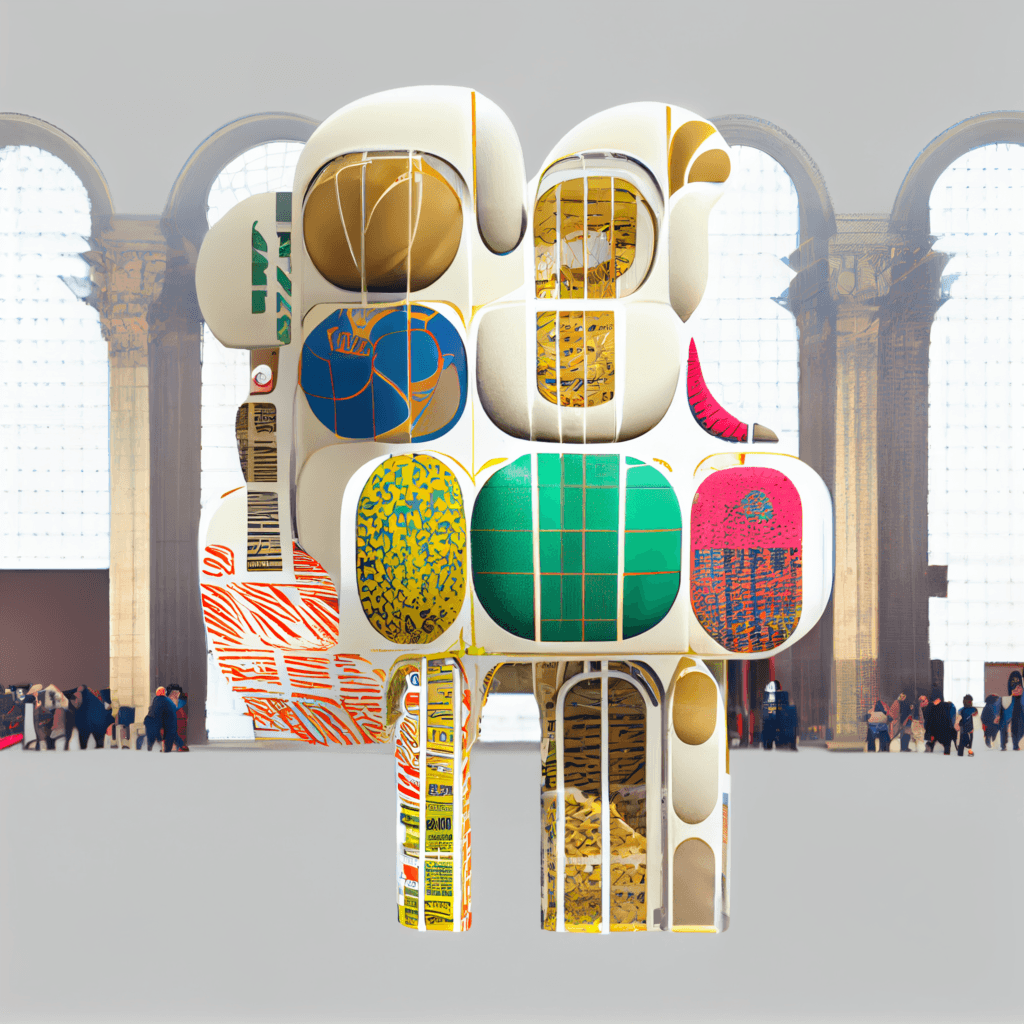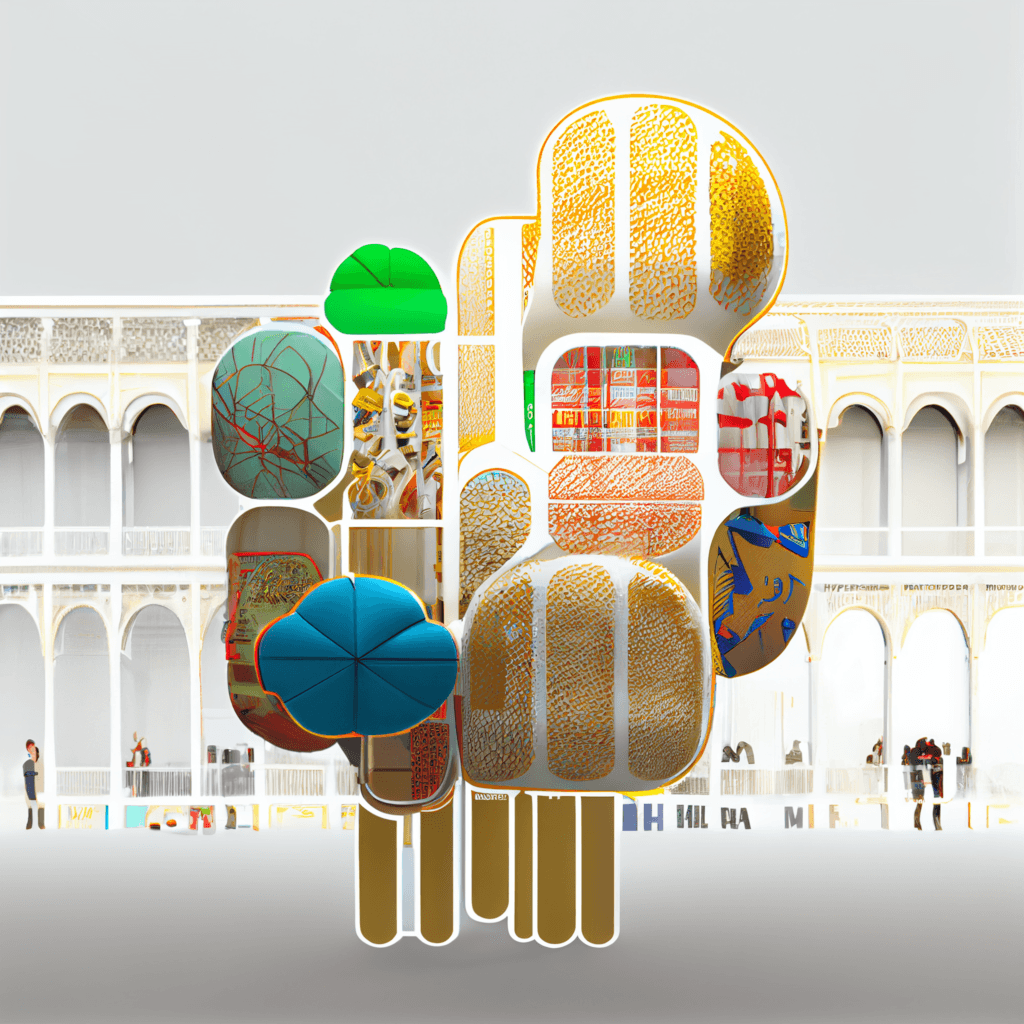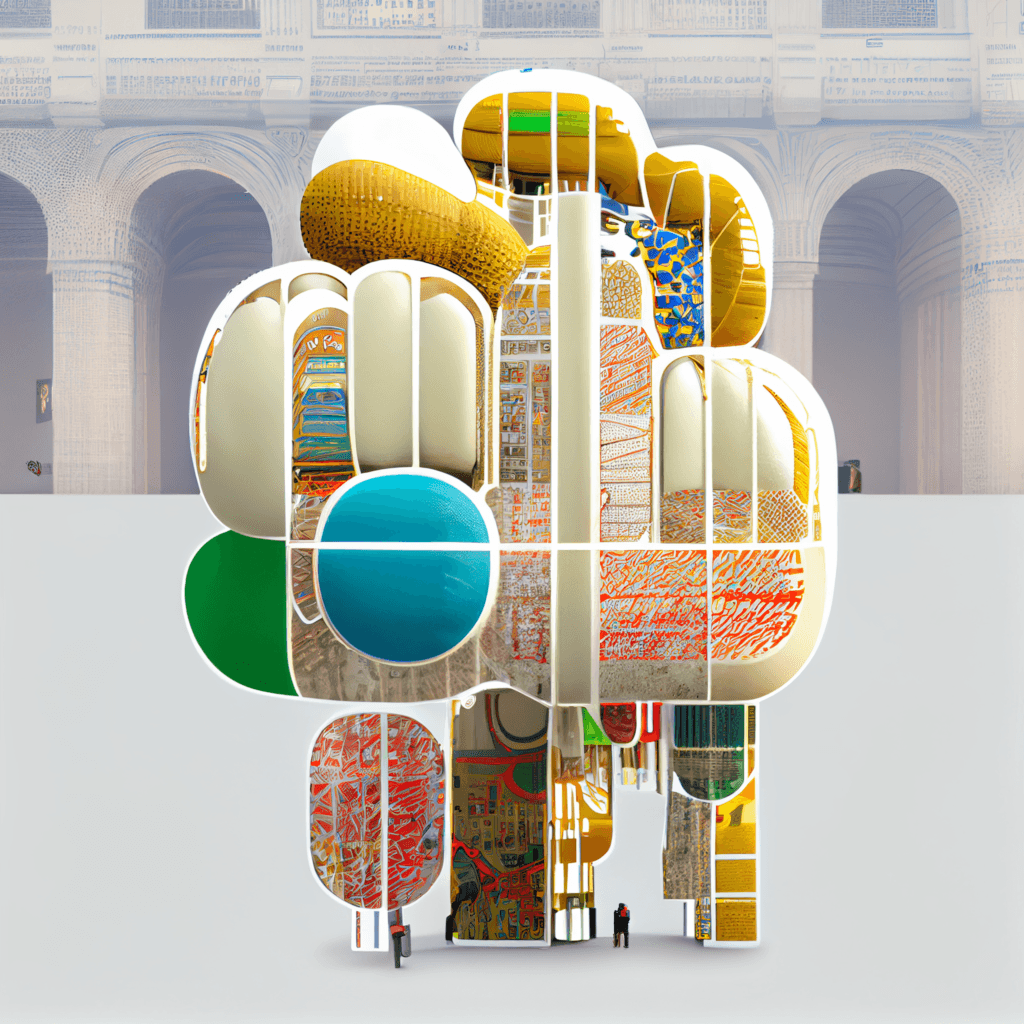BLENDED_MIDJOURNEY_V4
In a city that could have been any city, the citizens went about their daily lives as usual. They woke up early, went to work, met with friends, and returned home to rest. But there was something peculiar happening in their city that they had never noticed before.
Slowly, the citizens began to realize that the architecture around them was changing. Buildings that they had seen for years suddenly looked different. The facades were asymmetrical, the walls curved in unexpected ways, and the colors were bolder than before.
At first, people were confused. They wondered why the city’s architects were deviating from traditional designs. But as they looked closer, they began to see a pattern emerging.
The buildings were not just random designs but were a direct reflection of the identities of the diversity seen throughout the urban setting in which they all lived. The genderqueer architecture, as they later named it, was a representation of the fluidity and multiplicity of identities that existed in their city.
The citizens started to see the beauty in the genderqueer architecture, which reflected the diversity they had long celebrated but had never fully incorporated into their everyday lives. The buildings were a tangible reminder of the many identities that existed in their city, and they began to appreciate them in a new way.
People who had once felt isolated or ostracized by traditional architecture found solace in the genderqueer buildings, which provided a space for their identities to be recognized and celebrated. The city became a beacon for those seeking a place where their differences were not only accepted but celebrated.
As time passed, the citizens of the city began to embrace the genderqueer architecture fully. They recognized that it was a symbol of the inclusivity and diversity that they held dear. They saw it as a way to honor the city’s past while embracing its future.
And so, the genderqueer architecture became an integral part of the city’s identity, a reflection of the people who lived there and the values they held dear. The buildings stood as a testament to the power of diversity, a reminder that when we celebrate our differences, we create a more beautiful and meaningful world.
